Nasa SpaceX launch: Astronaut crew heads to orbit
- Published
- comments
Blast off: Watch the SpaceX rocket head into space
Four astronauts - three from the US and one from Japan - have launched from Florida on a mission to the International Space Station (ISS).
The crew rode to orbit in a rocket and capsule provided by the SpaceX company.
It's only the second time the firm has supplied the service.
The US space agency Nasa has said it is now entering a new era in which routine astronaut journeys to low-Earth orbit are being conducted by commercial providers.
The four individuals making their way up to the ISS are the Americans Michael Hopkins, Victor Glover and Shannon Walker, and the highly experienced Japanese space agency (Jaxa) astronaut Soichi Noguchi.
By participating in this mission, Noguchi becomes only the third person in history to leave Earth in three different types of space vehicle, having previously flown on Soyuz and shuttle hardware.

The traditional "walk-out": The suited crew waved to family and friends
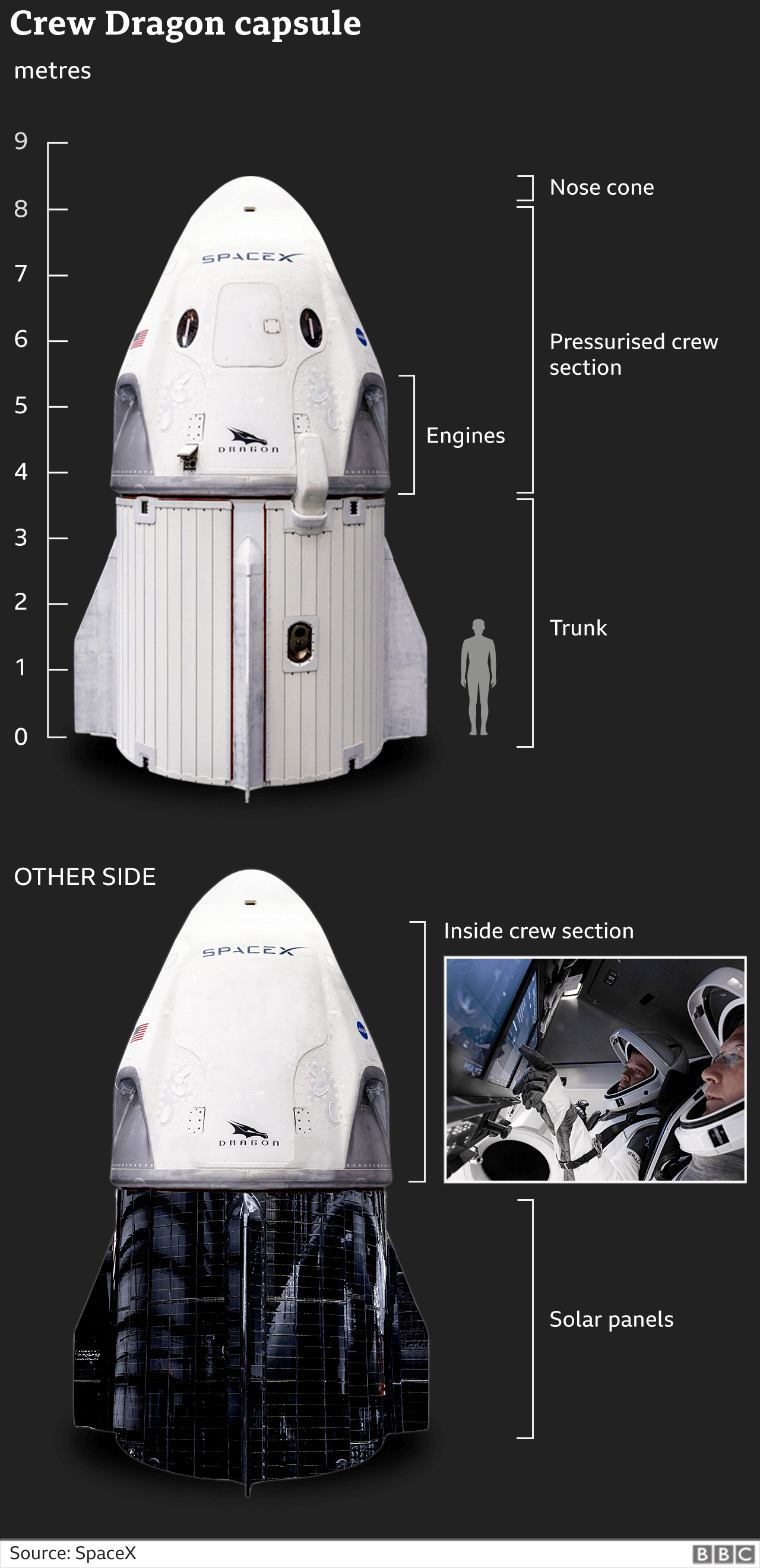

The crew's Falcon rocket and Dragon capsule left the pad at the Kennedy Space Center at 19:27 local time (00:27 GMT, Monday).
It took 12 minutes for the Falcon to get the Dragon into the right part of the sky and drop it off.
"Well done, that was one heck of a ride," crew commander Mike Hopkins radioed down to controllers. "Congratulations to everyone. Resilience is in orbit."
"Resilience" is the name the astronauts have given their capsule.
The ship will use its own thrusters to complete the rest of the journey up to the station. A docking with the orbiting platform is set for about 0400 GMT on Tuesday.
Allow X content?
This article contains content provided by X. We ask for your permission before anything is loaded, as they may be using cookies and other technologies. You may want to read X’s cookie policy, external and privacy policy, external before accepting. To view this content choose ‘accept and continue’.

When the team arrives, it will join Nasa's Kate Rubins and Russian space agency (Roscosmos) cosmonauts Sergey Ryzhikov and Sergey Kud-Sverchkov.
Having seven people on the 410km-high outpost will triple the amount of science that can be performed in its special microgravity environment.
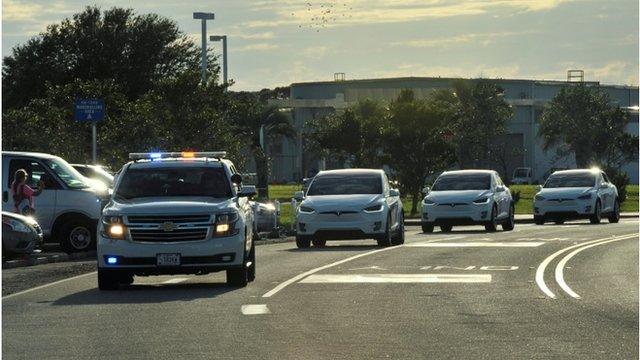
The crew was driven down to the launch pad in a convoy of Tesla electric cars
SpaceX has signed contracts with Nasa valued in excess of $3bn (£2.3bn) to develop, test and fly an astronaut taxi service.
As part of this relationship, the company ran a demonstration mission in May in which astronauts Doug Hurley and Bob Behnken were taken to the station and then returned safely to Earth.
The contracted arrangements also call for six "operational", or routine, missions - this flight being the first.
"The big milestone here is that we are now moving away from development and test and into operational flights. And in fact this operational flight was licensed by the Federal Aviation Administration. So this is a truly a commercial launch," commented Nasa Administrator Jim Bridenstine.
Nasa has a similar deal with the Boeing aerospace company, although its service is more than a year behind SpaceX.


The agency says its new model of contracting out transportation to low-Earth orbit is saving billions of dollars in procurement costs.
It intends to use these economies to fund its Moon and Mars ambitions. To that end, Nasa is close to testing the giant new rocket it has commissioned to take astronauts back to the lunar surface, a goal it hopes to attain in 2024, or soon after.
Hopkins, Glover, Walker and Noguchi will stay on the ISS for six months.
Just before they return to Earth, they'll be joined aloft by another SpaceX-launched crew for a brief handover.
Indeed, the coming year is going to be very busy for the Californian service provider with plenty of trips up to the station being made by both its crewed and cargo-only versions of Dragon.
"In the next 15 months, we should be flying roughly seven Dragon missions. And this mission represents the initiation of a Dragon in orbit continuously - knocking on wood - and certainly is really the beginning of a new era in human spaceflight," said SpaceX's Gwynne Shotwell.
The company president was in attendance at Kennedy, carrying out media duties in place of founder and CEO Elon Musk who is said to be suffering a mild case of Covid.
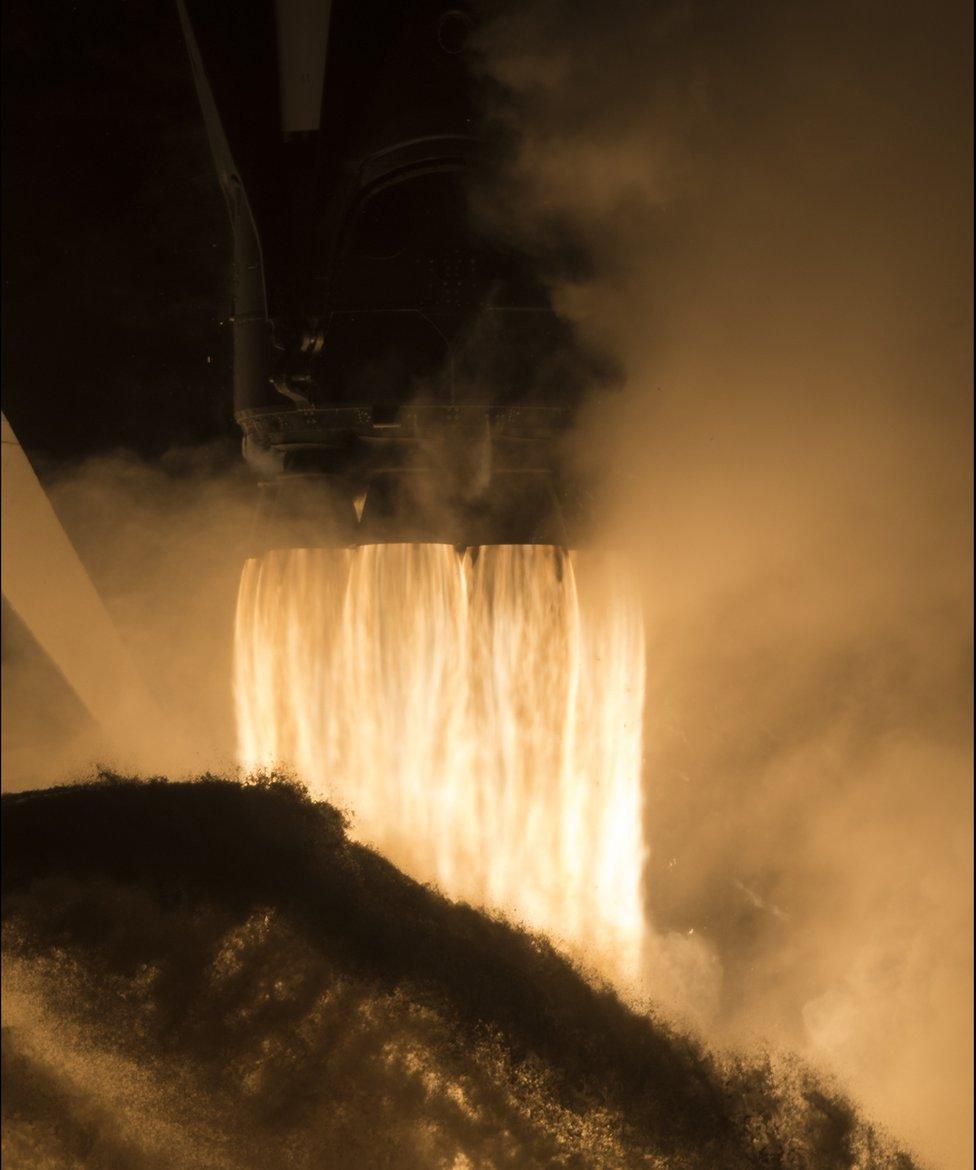
A dramatic shot of the Merlin engines firing at the base of the Falcon rocket

Nasa retired its winged space shuttles in 2011. In the intervening years, it's been buying seats for its astronauts on Russian Soyuz vehicles.
This purchase option will now close in favour of the new American-sourced taxis. But US astronauts will continue to go to the station on Soyuz from time to time - it's just that no money will change hands.
Instead, Russian cosmonauts will get flights in the American capsules in exchange.
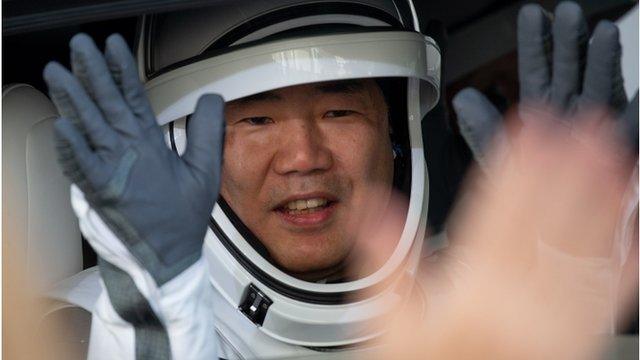
Soichi Noguchi has now flown in a SpaceX Dragon, a Soyuz capsule and a space shuttle
The new crew will have at least four spacewalks to perform in their time at the station.
In one of those walks, they will install the first significant UK industrial contribution to the platform.
This is the ColKa communications terminal. Made by MDA UK, the radio equipment will enable astronauts to connect with scientists and family on Earth at home broadband speeds.
ColKa will be fixed to the exterior of Europe's ISS research module, Columbus.
The UK participates on the station through its membership of the European Space Agency, an intergovernmental organisation that is a separate legal entity to the European Union.

Will the UK have a seat on a space taxi? Libby Jackson, UK Space Agency
The UK participates in the International Space Station, because the UK Space Agency exploration programme is part of the European Space Agency programme.
We already have British scientists who are able to use the facilities on the ISS. And there are some experiments in development now to be carried out aboard the space station in the coming years. One, called the BioAsteroid project, run by the University of Edinburgh, will investigate how gravity affects the interaction between microbes and rock in reduced gravity.
Astronauts on these space taxis will be taking these UK-led experiments to and from the space station. And much of the science can actually be operated remotely from the ground.
We may well also see British astronauts flying on this vehicle in the future, too.

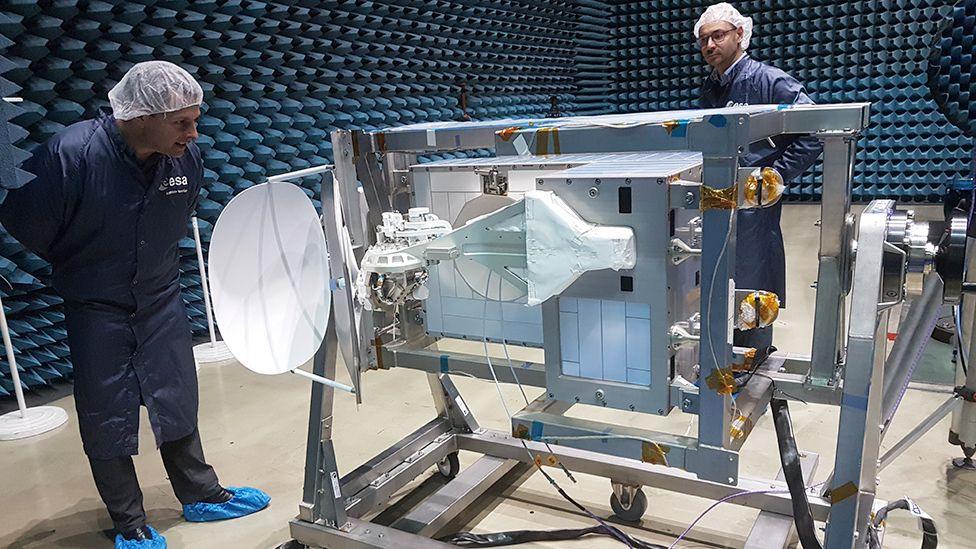
The British antenna terminal will be attached to the station during a spacewalk